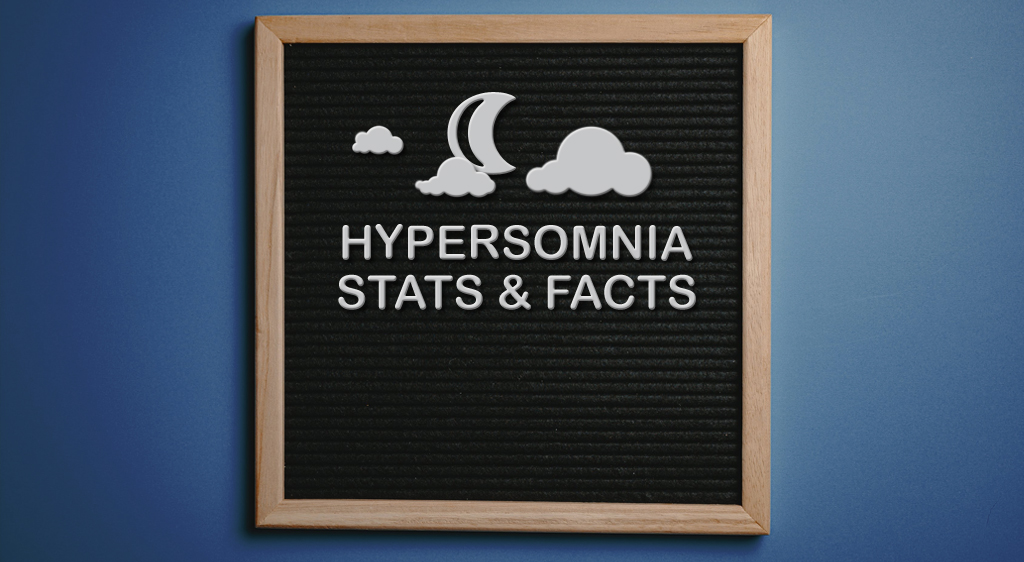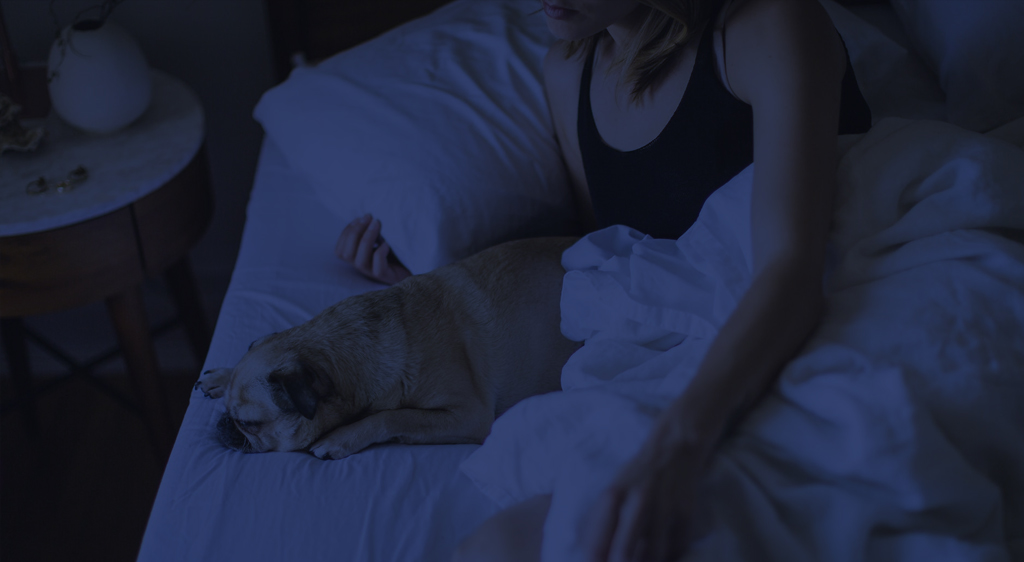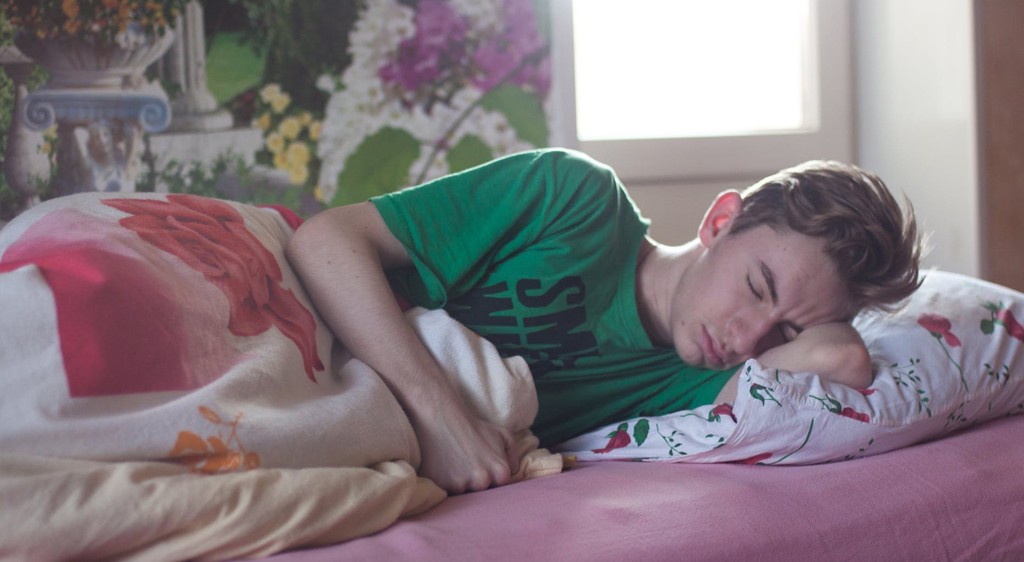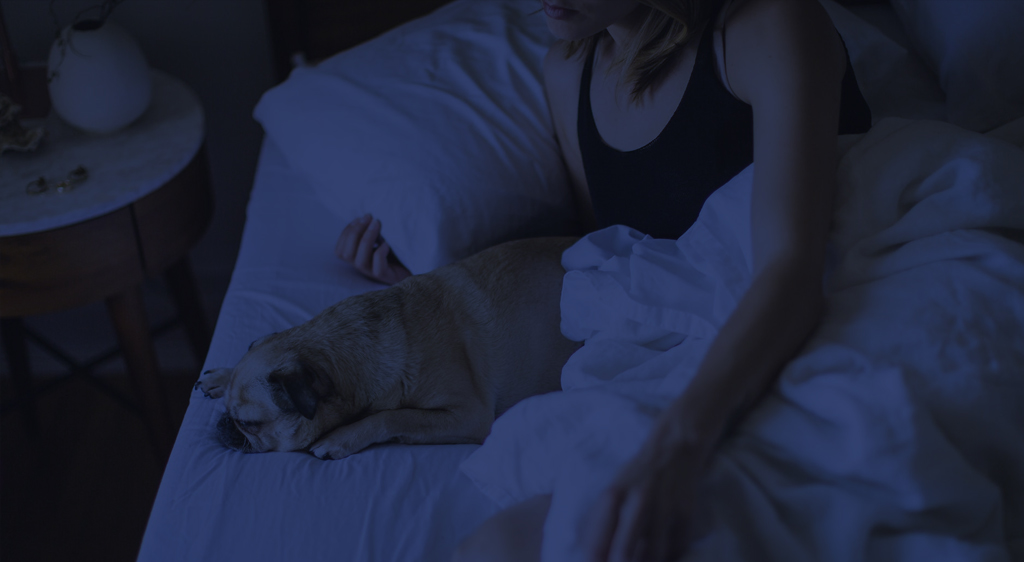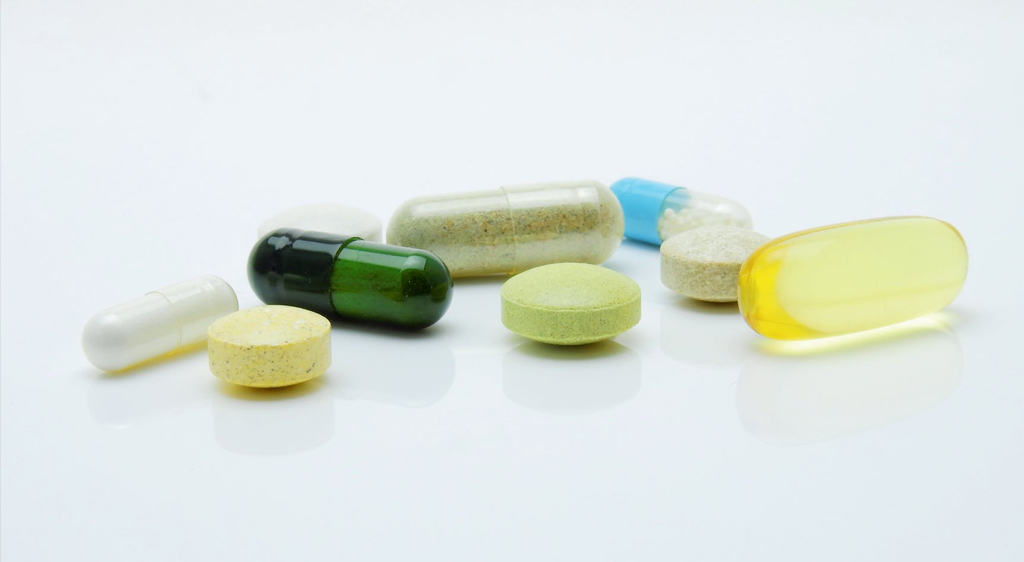Mattresses
SHOP STANDARD SIZES
SHOP STANDARD SIZES
SHOP BY TYPE
SHOP BY BRAND
RV Mattresses
Adjustable Beds
Shop By Brand
Shop By Size
Oversized Beds
Hypersomnia Statistics
Many people experience a noticeable dip in their alertness, energy level, and ability to concentrate in the afternoon. This mid-afternoon slump is fairly common and is usually fixed by a cup of coffee or tea. However, there are some who unfortunately experience extreme cases of sleepiness. Medical professionals call this excessive daytime sleepiness hypersomnia. Hypersomnia is a condition in which a person has trouble staying awake during the day. People who have hypersomnia can fall asleep at any time. That may sound silly, but it can be very dangerous. Falling asleep “any time” can range from dozing off while at work, or driving on a busy highway. People with hypersomnia may also have other sleep-related problems, including a lack of energy and trouble thinking clearly.
The 3rd edition of International Classification of Sleep Disorders (ICSD-3) reserves the word “hypersomnia” to specific disease entities, such as idiopathic hypersomnia and the related sleep disorders. The latter of which includes narcolepsy type 1 (with cataplexy), narcolepsy type 2, Kleine-Levin syndrome, hypersomnia due to a medical condition, hypersomnia due to a medication or substance, hypersomnia associated with a psychiatric condition, and insufficient sleep syndrome. (WebMD), (Hypersomnia Foundation)
The Most Surprising Hypersomnia Statistics
- Hypersomnia is present in 4 to 6% of the general population.
- Hypersomnia syndromes affect a growing proportion of 15% to 30% of people suffering from sleep problems.
- Diagnosing hypersomnia usually involves a score of 10 or above on the Epworth Sleepiness Scale.
- To be diagnosed with hypersomnia, a person needs to have daily symptoms for at least 3 months.
- People with hypersomnia can sleep for as much as 18 hours a day.
- People with hypersomnia can also fall asleep in less than 8 minutes.
- Hypersomnia commonly starts before the age of 30.
- About 30% of people with hypersomnia claim the sleep disorder interferes with their daily life.
(National Center for Biotechnology Infomation), (National Associations of State EMS Officials), ( National Sleep Foundation)
General Hypersomnia Statistics and Facts
1. There are 2 broad classifications of hypersomnia.
Primary hypersomnia occurs on its own with no other medical conditions present. On the other hand, secondary hypersomnia is due to other medical conditions that can cause poor sleep at night, resulting in daytime sleepiness. These other conditions can include other sleep disorders such as sleep apnea, or chronic diseases such as Parkinson’s disease and kidney failure.
(Healthline)
2. Primary and secondary hypersomnia includes 4 sleep disorders each.
Under primary hypersomnia are idiopathic hypersomnia, Kleine-Levin syndrome, narcolepsy type 1, and narcolepsy type 2. Classification is based mostly on symptoms and sleep testing results. On the other hand, secondary hypersomnia includes hypersomnia due to a medical condition, hypersomnia due to a medication or substance, hypersomnia associated with a psychiatric condition, and insufficient sleep syndrome.
(Hypersomnia Foundation)
Idiopathic Hypersomnia
3. Idiopathic Hypersomnia (IH) is 10 times less frequent than narcolepsy.
For a long time, people confused IH with narcolepsy, but it researchers made the distinction through polysomnographic studies. Likewise, unlike in narcolepsy, people with IH can resist falling asleep during the day.
(National Center for Biotechnology Information)
4. Idiopathic hypersomnia statistics show that about 75% do not feel refreshed after short naps.
Although people with IH can resist the sleepiness, if they do choose to sleep, they usually still feel tired. A study found that patients report that short naps are not refreshing, compared to controls.
(Yves Dauvilliers, MD, PhD and Alain Buguet, M.D., PhD) , (PubMed)
5. Sleep efficiency is greater than 90% in patients with idiopathic hypersomnia.
This is another difference between IH and narcolepsy. Most people with IH have nocturnal sleep that remains undisturbed, except for a delayed morning awakening.
(Yves Dauvilliers, MD, PhD and Alain Buguet, M.D., PhD), (Lynn Marie Trotti, M.D., MSc)
6. Idiopathic insomnia occurs in about 0.3% of the general population.
What makes idiopathic hypersomnia different from narcolepsy is the presence of sleep-onset rapid eye movement (REM) period (SOREMP). A diagnosis of narcolepsy type 2, in particular, requires two or more SOREMPs on the multiple sleep latency test (MSLT) or on SOREMP on MSLT and another one on polysomnography. A diagnosis of IH requires one or no SOREMPs on both MSLT and polysomnography. The low number may also be due to wrong diagnoses, so the number may be higher.
(Maurice M. Ohayon, MD, DsC, PhD), (Hypersomnia Foundation)
7. Idiopathic hypersomnia statistics show that the mean age of onset is below 18 years, usually around the age of 15 or 16.
The condition commonly worsens over time. Some patients and their families even claim that symptoms had been present from the first year of life.
(Maurice M. Ohayon, MD, DsC, PhD)
8. The mean age of diagnosis is 30 years.
Although the age of onset occurs before 18 years, idiopathic hypersomnia statistics show that proper diagnosis commonly occurs around the age of 30. IH was only recognized as a distinct disease entity in 1979, so it is fairly young, and diagnosing it can be difficult. IH sharing symptoms with other sleep and psychiatric disorders also adds to the challenge.
(Maurice M. Ohayon, MD, DSc, PhD)
9. Males and females appear to have a 50:50 chance of having idiopathic hypersomnia.
In most studies, males and females appear to be equally affected by IH.
(Orphanet)
10. Idiopathic hypersomnia statistics show that 50 to 60% of cases are familial.
There appears to be a genetic factor with IH. There are studies that investigated potential genetic markers, but so far, none have been conclusive.
(National Sleep Foundation), (Michel Billiard, MD and Karel Sonka, MD)
11. A study found that 12.5% of people with idiopathic hypersomnia had parents with IH as well.
This study appears to suggest that a parent-child transmission may be present since 12.5% of the IH patients have at least one parent who routinely sleeps more than 9.5 hours per night.
(Cyrille Vernet, MD)
12. Kleine-Levin syndrome is estimated to affect 1 in 500,000 people.
Kleine-Levin syndrome (KLS) is another type of primary hypersomnia that also still has unknown origins. In KLS, the symptomatic periods of sleepiness is episodic, occurring for days to weeks, separated by months without excessive sleepiness. Some patients may develop symptoms of irritability, impulsive behavior, depersonalization, hallucinations, depression, and confusion.
(Orphanet), (MedScape)
Kleine-Levin syndrome
13. Hypersomnia statistics show that about 2 to 5% of Kleine-Levin syndrome cases have multiplex family origins.
Although the origins are still unknown, genetic factors may contribute to KLS. Some researchers associate KLS with the human leukocyte antigen gene DQB1*02, which suggests an autoimmune origin for KLS. However, this is still inconclusive.
(MedScape), (Quang Tuan Remy Nguyen, MD)
14. About 68 to 78% of Kleine-Levin syndrome patients are males.
Unlike idiopathic hypersomnia, KLS appears to be more prevalent in males, particularly adolescents.
(Orphanet)
15. The median age of onset of Kleine-Levin syndrome is 15 years.
Research shows that up to 81% of KLS cases appear by the second decade of life. Symptoms occur as “episodes”. These episodes are often abrupt and may appear as flu-like symptoms, which makes some researchers speculate that an underlying autoimmune process may have a role in the development of the disorder.
(MedScape), National Institute of Neurological Discorder and Stroke), (National Organization for Rare Diseases)
16. The hypersomnia episodes of Kleine-Levin syndrome lasts between 2 days and 4 weeks.
KLS itself may last up to 8 years, and episodes can recur every 3 to 4 months. During episodes, patients may sleep for up to 21 hours. They can also experience cognitive impairments such as apathy, confusion, slowness, and amnesia. Patients can even have a specific feeling of derealization a dream-like state with altered perception.
(Orphanet), (MedScape)
17. Infection triggers the first episode in 72% of Kleine-Levin syndrome patients.
The onset of the condition usually follows a viral infection. Researchers have observed different viruses that trigger KLS. These viruses include Epstein-Barr virus, varicella-zoster virus, herpes zoster virus, Influenza A virus subtypes, and adenovirus.
(MedScape), (Isabelle Arnulf, MD)
18. Alcohol appears to trigger about 23% of Kleine-Levin syndrome cases.
Alcohol is known to increase the permeability of the blood-brain barrier. This can allow pathogenic agents or immunoglobulins to enter the brain, resulting in an infection that can trigger a KLS episode.
(MedScape), (Isabelle Arnulf, MD)
19. Psychological and physical stresses appear to trigger around 20% of Kleine-Levin syndrome cases.
Some researchers speculate that activities or events that cause psychological stress, or habits that elicit mental or physical exertion can trigger episodes of KLS.
(Isabelle Arnulf, MD)
20. Hypersomnia statistics show that up to 66% of Kleine-Levin syndrome patients can experience hyperphagia.
One of the behavioral abnormalities that people with KLS exhibit is excessive compulsive eating. Patients do not complain about hunger, but will typically consume available food regardless of the food’s condition, quality, appeal, or even the patients’ preferences.
(Orphanet), (National Organization for Rare Diseases)
21. About 53% of patients, mostly male, experience hypersexuality.
In some cases, people with KLS, mostly males, have an abnormal higher sexual drive.
(Orphanet), (National Organization for Rare Diseases)
22. Secondary hypersomnia is more common than primary hypersomnia.
Cases of secondary hypersomnia are more widespread because of the numerous health conditions and medications that also elicit excessive sleepiness.
(Sleep Scientist)
Secondary Hypersomnia
23. Excessive daytime sleepiness can be present in up to 87% of patients with sleep apnea.
Sleep apnea occurs when breathing repeatedly stops during sleep. As a result, people with sleep apnea frequently wake up at night, making them feel excessively sleepy on the next day. Obstructive sleep apnea is a particularly significant cause of excessive daytime sleepiness. An estimated 26 to 32% of adults are at risk of or have obstructive sleep apnea.
(Science Direct), (J.F. Pagel, MD, MS)
24. About 60 to 90% of people with Parkinson’s Disease suffer from sleep disruptions that can lead to hypersomnia.
The neurological malfunctions that come with Parkinson’s Disease can also contribute to sleep disorders. These sleep disruptions include sleep fragmentation, sleep-disordered breathing, restless legs syndrome nightmares, and rapid eye movement sleep behavior disorder.
(Sleepy Scientist)
25. Hypersomnia can be present in as many as 50% of people with kidney disease.
Up to 80% of patients with chronic kidney disease complain about sleep disorders, with excessive daytime sleepiness being, one if not the most, common. Severe decrease in kidney function can also lead to a buildup of waste products in the body, causing tiredness and fatigue.
(Sleepy Scientist), (National Center for Biotechnology Information), (Nina Teixeira Fonseca, PT, MSc)
26. People with psychiatric conditions have 2 to nearly 3 times higher risk for hypersomnia.
Hypersomnia is known to be comorbid with multiple psychiatric and substance abuse disorders These other disorders include insomnia, anxiety and depression, as well as anti-depressant and benzodiazepine use.
(Bhanuprakash Kolla, MD)
27. Research on treatments are still ongoing for hypersomnia.
There is still no US FDA-approved treatment for idiopathic hypersomnia. However, US FDA-approved treatments for narcolepsy are commonly used to treat the sleepiness in IH. Some are listed below. On the other hand, some people with IH have found that behavioral approaches, including cognitive behavioral therapy, can be helpful for learning skills to cope with IH. There is no definitive treatment for Kleine-Levin syndrome. Most medical professionals advise watchful waiting at home, rather than pharmacotherapy. In the case of secondary hypersomnia, addressing the other health conditions can alleviate the sleepiness symptoms.
(Hypersomnia Foundation), (National Institute of Neurological Disorders and Stroke)
Hypersomnia Pharmacotherapies
28. Modafinil can reduce daytime sleepiness as measured by the Epworth Sleepiness Scale by more than 5 points.
Modafinil is a prescription stimulant drug that can reduce the sleepiness in narcolepsy and other sleep disorders. It, however, does not cure the disorders.
(Dr. Geert Mayer)
29. About 62 to 95% of idiopathic hypersomnia patients respond to methylphenidate.
Methylphenidate is another stimulant drug that blocks the reuptake of dopamine, which is known as the sleep hormone.
(Mink Schinkelshoek, PhD)
30. About 67% of people with idiopathic hypersomnia respond to GABA-A receptor antagonists.
GABA is a neurotransmitter that inhibits certain brain signals. When GABA attaches to receptors in the brain, it produces a calming effect. Research shows that people with IH have abnormal GABA signalling, which suggests that GABA-A receptor antagonists,which inhibit GABA, may be a treatment for sleep disorders. Unfortunately, 52 to 95% of cases that used GABA-A receptor antagonists had adverse effects.
(Mink Schinkelshoek, PhD)
Conclusion
Hypersomnia is a rare diseases that scientists and health professionals poorly understands. Its effects on those with hypersomnia can range from mildly inconvenient to debilitating. Because there are delays on diagnosis and little knowledge is present, patients suffer. Therefore, awareness and vigilance are crucial in both patients and healthcare providers to mitigate the symptoms and lighten the burden of living with this disease.
References
WebMD:
https://www.webmd.com/sleep-disorders/hypersomnia
Dauvilliers and Buguet, 2005:
https://www.ncbi.nlm.nih.gov/pmc/articles/PMC3181743/#ref2
National Association of State EMS Officials:
https://epworthsleepinessscale.com/about-the-ess/
National Sleep Foundation:
https://www.sleepfoundation.org/professionals/sleep-americar-polls/2009-health-and-safety
Healthline:
https://www.healthline.com/health/hypersomnia#types
Hypersomnia Foundation:
https://www.hypersomniafoundation.org/classification-of-hypersomnias/
Ohayon, 2008:
https://www.ncbi.nlm.nih.gov/pmc/articles/PMC2362500/
Hypersomnia Foundation:
https://www.hypersomniafoundation.org/what-does-one-soremp-mean/
Orphanet:
https://www.orpha.net/consor/cgi-bin/OC_Exp.php?lng=en&Expert=33208
National Sleep Foundation:
Billiard and Sonka, 2016:
https://www.sciencedirect.com/science/article/pii/S1087079215001112
Vernet et al., 2010:
https://pubmed.ncbi.nlm.nih.gov/20408941/
Trotti:
https://www.ncbi.nlm.nih.gov/pmc/articles/PMC5558858/
Orphanet:
https://www.orpha.net/consor/cgi-bin/OC_Exp.php?lng=EN&Expert=33543
MedScape:
https://emedicine.medscape.com/article/291699-overview
Nguyet et al., 2016:
https://www.ncbi.nlm.nih.gov/pmc/articles/PMC4945312/
Arnulf et al., 2012:
https://www.sciencedirect.com/science/article/pii/S1474442212701874?via%3Dihub
National Organization for Rare Diseases:
https://rarediseases.org/rare-diseases/kleine-levin-syndrome/
Arnulf et al., 2005:
https://academic.oup.com/brain/article/128/12/2763/420465
Sleep Scientist:
http://sleepyscientist.com/ hypersomnia
Science Direct:
https://www.sciencedirect.com/science/article/pii/S1389945704000619?via%3Dihub
Pagel, 2009:
https://www.aafp.org/afp/2009/0301/p391.html
Nigam et al., 2018:
https://www.ncbi.nlm.nih.gov/pmc/articles/PMC5797456/
Fonsêca et al., 2014:
http://www.scielo.br/scielo.php?script=sci_arttext&pid=S0103-51502014000400653
Kolla et al., 2017:
https://academic.oup.com/sleep/article/40/suppl_1/A239/3782029
Mayer et al., 2014:
https://onlinelibrary.wiley.com/doi/full/10.1111/jsr.12201
Schinkelshoek et al., 2019:
https://link.springer.com/article/10.1007/s40675-019-00158-7
Hypersomnia Foundation:
https://www.hypersomniafoundation.org/about-treatment/
National Institute of Neurological Disorders and Stroke:
https://www.ninds.nih.gov/health-information/disorders/kleine-levin-syndrome
© 2025 Rest Right Mattress. All Rights Reserved.


